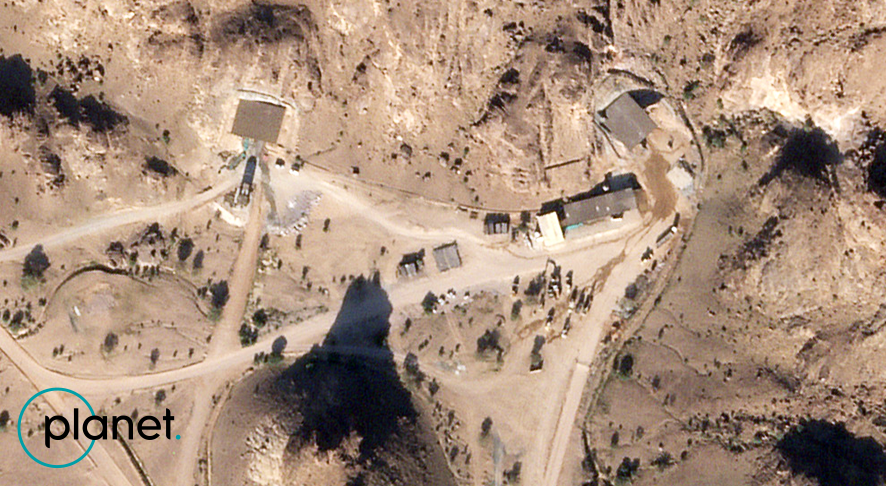Riyadh’s silent ballistic-missile surge
While the details surrounding Saudi Arabia’s missile capabilities remain largely elusive, recent satellite imagery
indicates the country may be quietly modernising or expanding its ballistic-missile force.
indicates the country may be quietly modernising or expanding its ballistic-missile force.
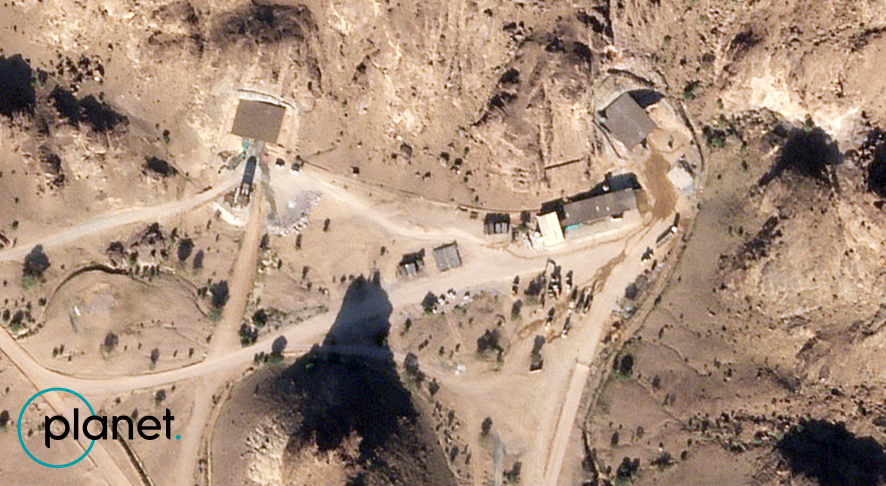
Saudi Arabia established its long-range surface-to-surface missile capability in the 1980s in response to regional missile proliferation and use, particularly during the Iran–Iraq War, as well as Israel’s demonstrated ability to conduct highly effective long-range aerial strikes. In 1988, Riyadh acquired DF-3 (CH-SS-2) intermediate-range ballistic missiles from China. To support the deployment of these systems, the Royal Saudi Strategic Missile Force (RSSMF) constructed four underground bases at al-Hariq, al-Sulayyil, Raniyah and al-Watah.
While the liquid-propellant DF-3 missiles provided substantial range, their operational limitations were readily apparent even at the time of purchase. The DF-3 required complex and time-consuming launch preparations and its inaccuracy further diminished its operational value. By the 2000s, various sources suggested that Saudi Arabia was seeking to procure more-accurate solid-propellant missiles from China, with later reporting claiming that Saudi Arabia had purchased the DF-21 (CH-SS-5) in 2007. Memorabilia (missile models) associated with the RSSMF also suggest that the country may have acquired missile systems other than the DF-3.
In 2014, Saudia Arabia displayed the DF-3 in public for the first time, sparking speculation that Riyadh might adopt a more open posture regarding its ballistic-missile capabilities. While no such increased openness has followed, geospatial analysis points towards significant development activity related to the RSSMF since the late 2010s.

While the liquid-propellant DF-3 missiles provided substantial range, their operational limitations were readily apparent even at the time of purchase. The DF-3 required complex and time-consuming launch preparations and its inaccuracy further diminished its operational value. By the 2000s, various sources suggested that Saudi Arabia was seeking to procure more-accurate solid-propellant missiles from China, with later reporting claiming that Saudi Arabia had purchased the DF-21 (CH-SS-5) in 2007. Memorabilia (missile models) associated with the RSSMF also suggest that the country may have acquired missile systems other than the DF-3.
In 2014, Saudia Arabia displayed the DF-3 in public for the first time, sparking speculation that Riyadh might adopt a more open posture regarding its ballistic-missile capabilities. While no such increased openness has followed, geospatial analysis points towards significant development activity related to the RSSMF since the late 2010s.

A suspected new missile base
Most notably, Saudi Arabia appears to have constructed an underground missile base near the town of al-Nabhaniyah, marking the first new facility built since the 1980s. Construction began in 2019 and appeared to be largely completed by the beginning of 2024, although some tunnel work continued.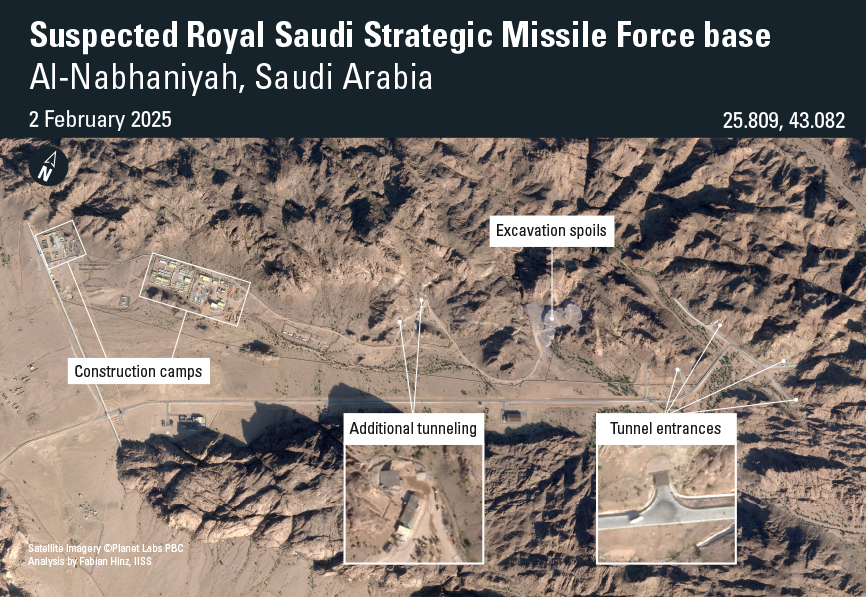
Multiple indicators point to the site’s function as a missile base. The style of the administrative buildings aligns with other known RSSMF facilities, as does the geographical separation between the underground complex and the overground residential and administrative areas. Tunnel entrances follow the same design seen at the RSSMF base at al-Sulayyil, and contractor records confirm the project falls under the purview of the Ministry of Defense. Additionally, RSSMF commander Jarallah Alaluwayt was reported to be in al-Nabhaniyah (engaged in charitable activities) shortly before construction began.
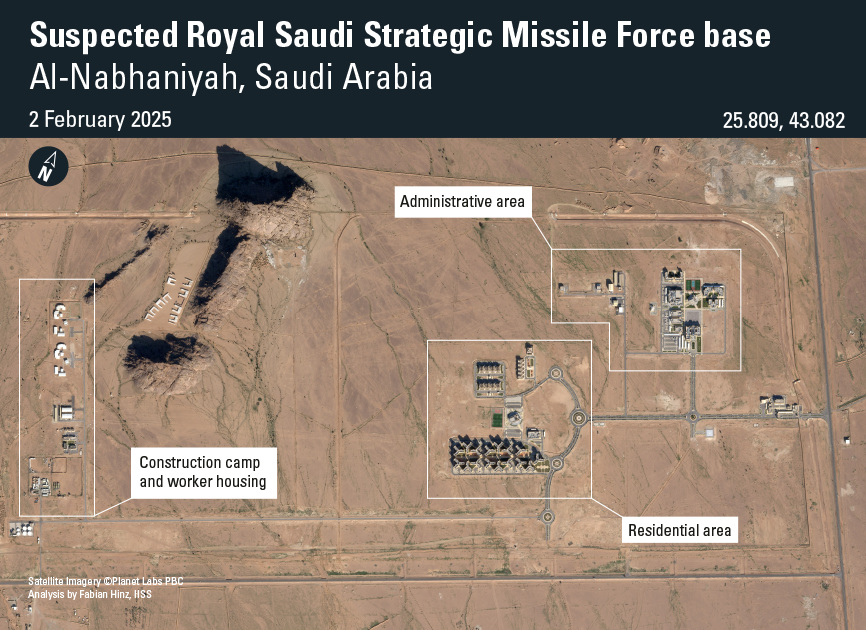
New facilities at the RSSMF Center and School
New construction is also visible at the RSSMF Center and School in Wadi al-Dawasir. The site includes an approximately 29 metre-tall high-bay building, likely built in the late 1980s to support the DF-3 force, possibly as a training or maintenance facility. In the early 2000s, an approximately 17 metre-tall high-bay building was added, likely linked to the reported acquisition of a newer, more compact missile system. Most recently, between 2019 and 2021, a third large high-bay building was constructed at the site. While its exact function remains unclear, its design and placement suggest it serves an operational or support role within the RSSMF infrastructure.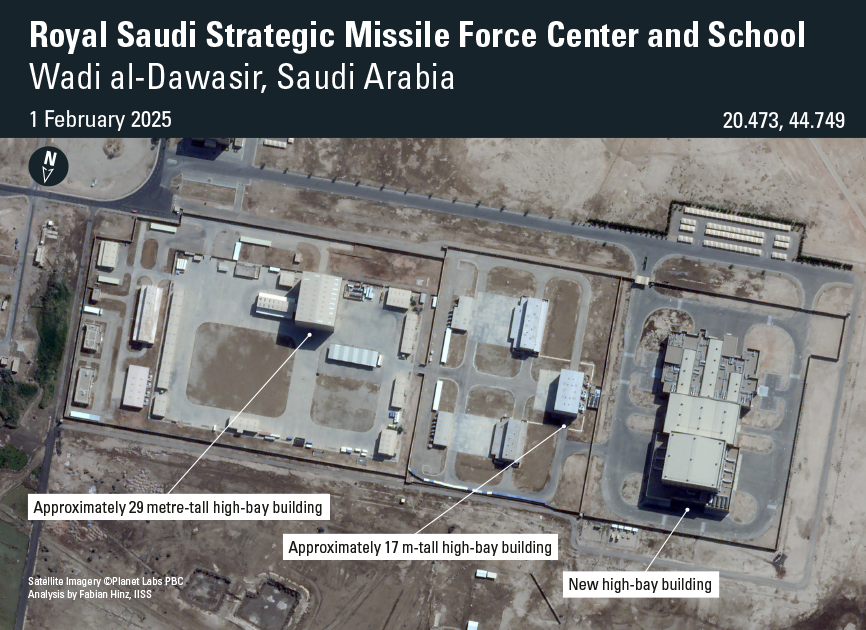
Further activities
Similar signs of modernisation or expansion are visible at other RSSMF sites. Two new annexes were constructed at the RSSMF headquarters in Riyadh between 2017 and 2019. In the same time span, the number of covered parking spaces at the headquarters increased from around 511 to 688.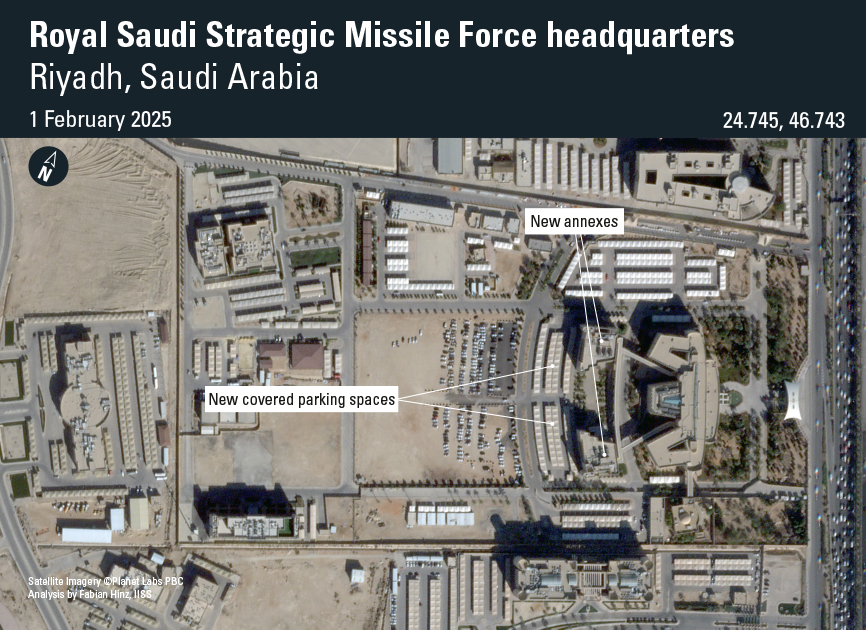
In the second half of the 2010s, new tunnels were constructed at the RSSMF missile bases in al-Hariq and Raniyah. An additional underground section was also constructed at the al-Sulayyil base between 2019 and 2023.
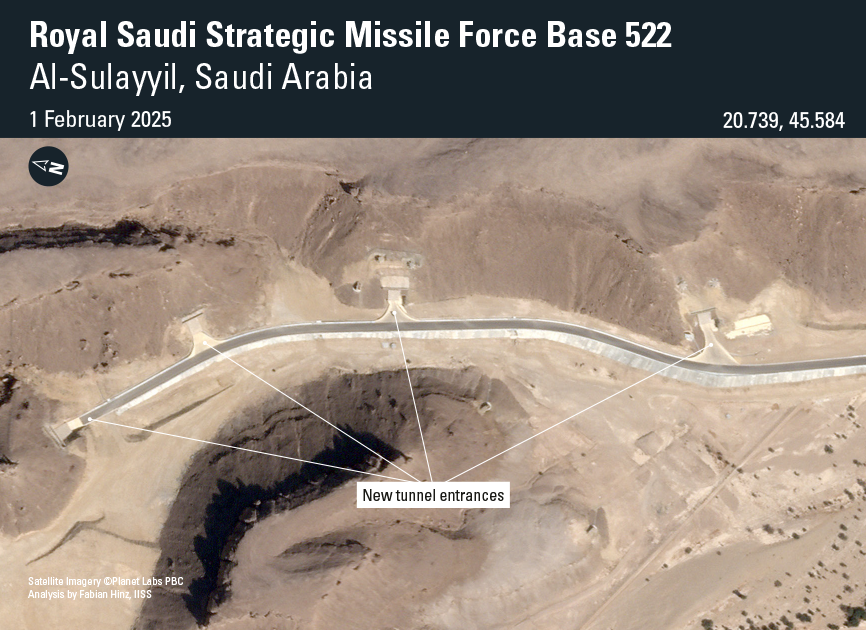
nanswered questions
While the above activities point towards a potential modernisation or expansion of RSSMF capabilities, details about the nature and scope of these developments remain largely elusive. One exception to the general secrecy surrounding the Saudi missile programme was a 2022 report by Intercept. Citing a United States intelligence source, the article claimed that Saudi Arabia was planning new imports of Chinese ballistic missiles under a programme named ‘Crocodile’. While these plans reportedly raised concerns in Washington, their specifics – including whether they were eventually implemented – remain unclear.Similar uncertainty surrounds Saudi Arabia’s ambitions for the local assembly or manufacturing of ballistic missiles. As part of its broader Vision 2030 agenda, Riyadh has prioritised the development of a domestic defence-industrial base. Crown Prince Muhammad bin Salman Al Saud has stressed that at least partial local production will become a binding requirement for all purchases of military hardware. This approach also appears to extend to missile systems. Saudi Arabia is known to have established a solid-propellant motor-production facility at the al-Watah missile base, and US intelligence assessments indicate that it is now producing ballistic missiles with Chinese assistance. Yet details about the specific systems it plans to assemble or manufacture remain unknown.
The secrecy surrounding Saudi Arabia’s ballistic-missile force will likely remain in place unless Riyadh alters its information policy or new information emerges, potentially from the US. The apparent absence of ballistic-missile use in Saudi Arabia’s campaign against Ansarullah (the Houthis) indicates that these systems might serve more as a strategic deterrent than a war-fighting capability. As such, their true role may only come to light in crisis.

